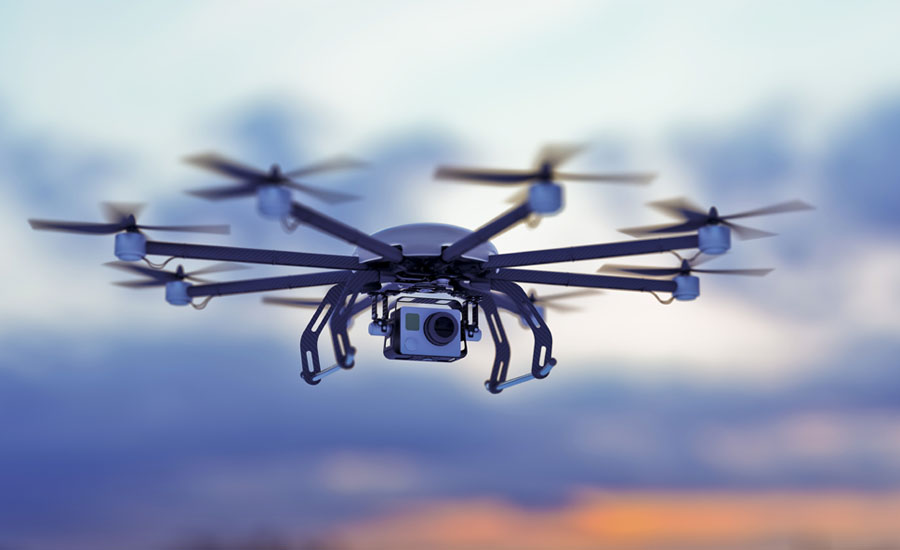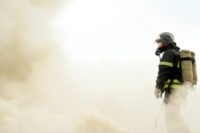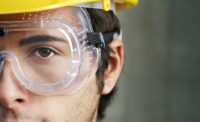The UAS Drones Disaster Conferences are designed to bring together government, industry, and academia for two days of learning and live drone flight demonstrations. Taking place in Los Angeles and Miami, these events are organized by the Airborne International Response Team (AIRT), a 501(c)3 non-profit, non-governmental organization that helps people and departments prepare for, respond to, and recover from complex emergencies and major disasters.
Christopher Todd serves as the executive director of AIRT, and his commitment to emergency response stretches back to his volunteering for emergency response organizations in South Florida, where he gained a much greater appreciation for what officials do for the community. Since then, he’s helped provide professional-grade UAS services and training for public safety while also pushing back against the false narratives that negatively impact the drone industry.
Todd talked about the kinds of real-world differences he’s seen drone technology make, what type of insights will be explored at both the LA and Miami conferences, plus much more.
“Like most other UAS service providers, when we launched Airborne Response we had the vision of creating the World’s Largest Air Force of drone operators who would be capable of flying a wide-variety of on-demand missions for a range of sectors — agriculture, construction, industrial inspections, etc. That was where the industry was focused at that stage in the life cycle as companies attempted to achieve scale, and we played along with the game.
“However, we never believed the “Uber for Drones” model was a viable business model for the UAS services industry. Whether it’s power line inspections or thermography, we’re seeing much more specialization in each vertical, so trying to be the all things to all people really doesn’t work. You’ve really got to be proficient in a core use case to make the technology valuable.
”Aviation has always been a highly specialized industry requiring operators with a great deal of skill and proficiency, and that has always been the focus of Airborne Response. Since that time, we have clearly evolved our business plan toward providing Mission Critical Unmanned Solutions™ for government and industry, with an emphasis on public safety, security, emergency management, and disaster response. This is a sector that has been slower to evolve, but should prove highly lucrative from a longer-term business perspective.
“Public safety customers are dealing with life safety missions requiring rapid results every single day, while enterprise customers are typically focused on generating growth and shareholder value over a longer term. They are completely different customer mindsets, requiring flexible business strategies and tactics on how we approach each type of organization.
“There’s an old adage in public safety that says ‘the badge sells to the badge’, meaning that public safety officials typically trust business development and customer service representatives who have the same type of on-the-job experience as themselves. That’s why our team at Airborne Response is comprised of personnel with law enforcement, fire rescue, and military experience, as well as corporate business and international trade experience. Our team composition allows us to navigate both the public safety and enterprise landscape more effectively than many of our competitors.
“The key to successful disaster response operations, whether you’re using UAS or anything else, starts with planning and logistics. You need to have a solid plan and support system with failsafe options if you are going to head into a disaster area. You also need to have a reason to be there — such as pre-coordinated response contract or industrial partner who is looking after you.
“Florida Power and Light did an amazing job with the support and logistics during the Hurricane Irma response back in 2017. We always had a location where we could upload data, take on fuel, recharge batteries, grab a hot meal, and get some needed rest. That is often not the case. I cringe every time I see ‘drone cowboys’ rushing off to a disaster scene hoping to get some work. Sometimes they luck out, but most often I think they realize it was a wasted effort. It’s just too easy for them to become part of the problem rather than part of the solution.
That’s one the reasons we hold our annual Disaster Camp training for UAS pilots here in Miami prior to the start of hurricane season. We train our flight teams on how to prepare for a potential deployment, how to integrate into the FEMA incident command system model, and how to remain self-sufficient in the field for a minimum of 72 hours when other resources and support can get there to back up those efforts.
“Under the UAS Drones brand for our non-profit organization, we have the conferences, the camps and the exercise. The Conference is what’s happening in LA and Miami, and that’s where we bring in people for education and sharing ideas. The camps are where we specifically bring pilots in to train on how to operate in disasters, so we’ll put them through drills and simulations. The exercises are where we bring public safety flight teams in so that we can test their training and development strategies. Last year was the first year that we actually ran all three and we’re going to be doing it again this year, which is something we’re really excited about.”
Source: www.expouav.com



